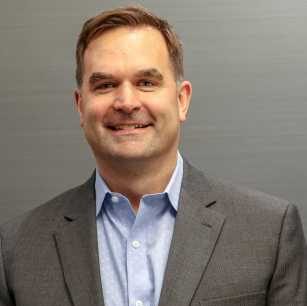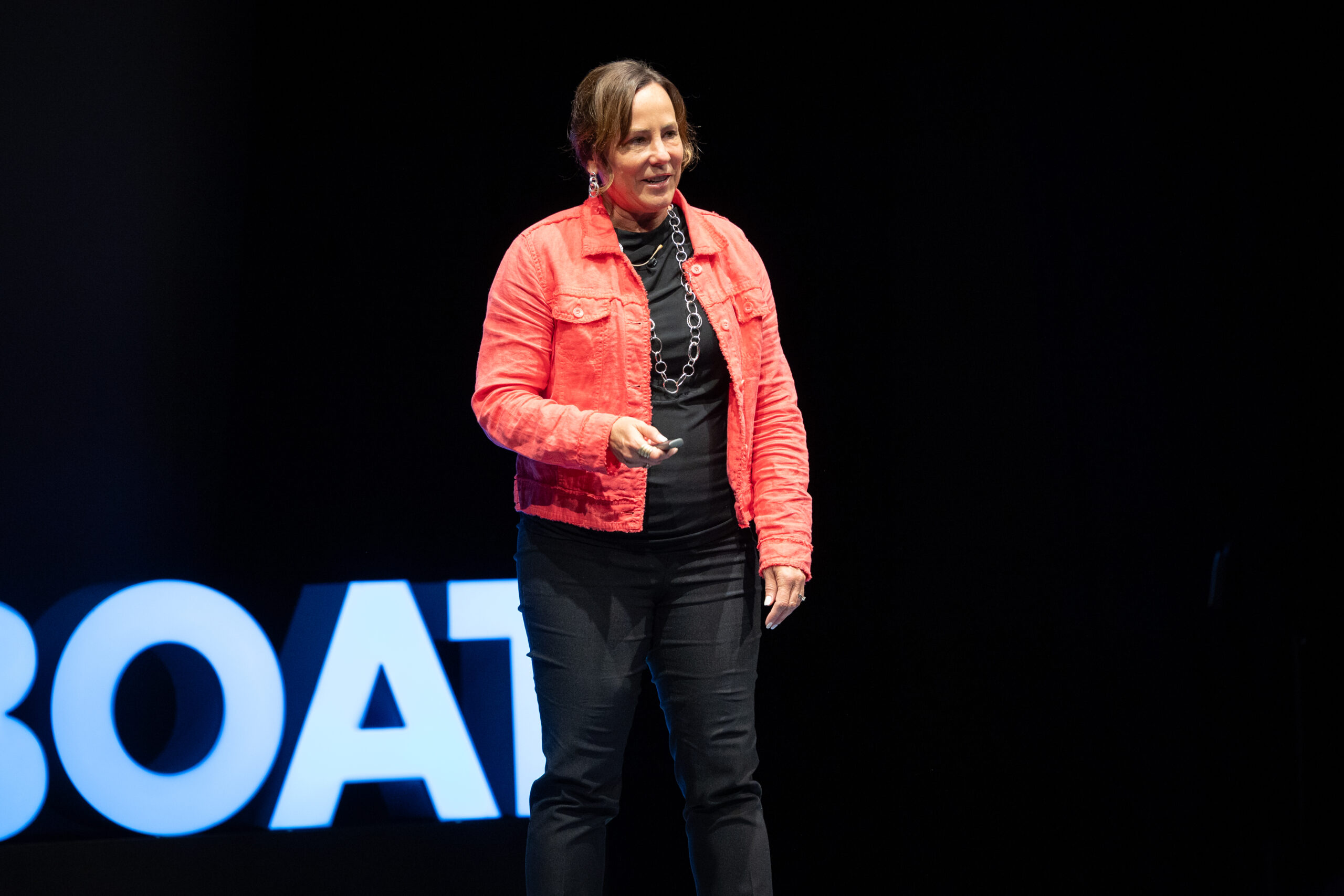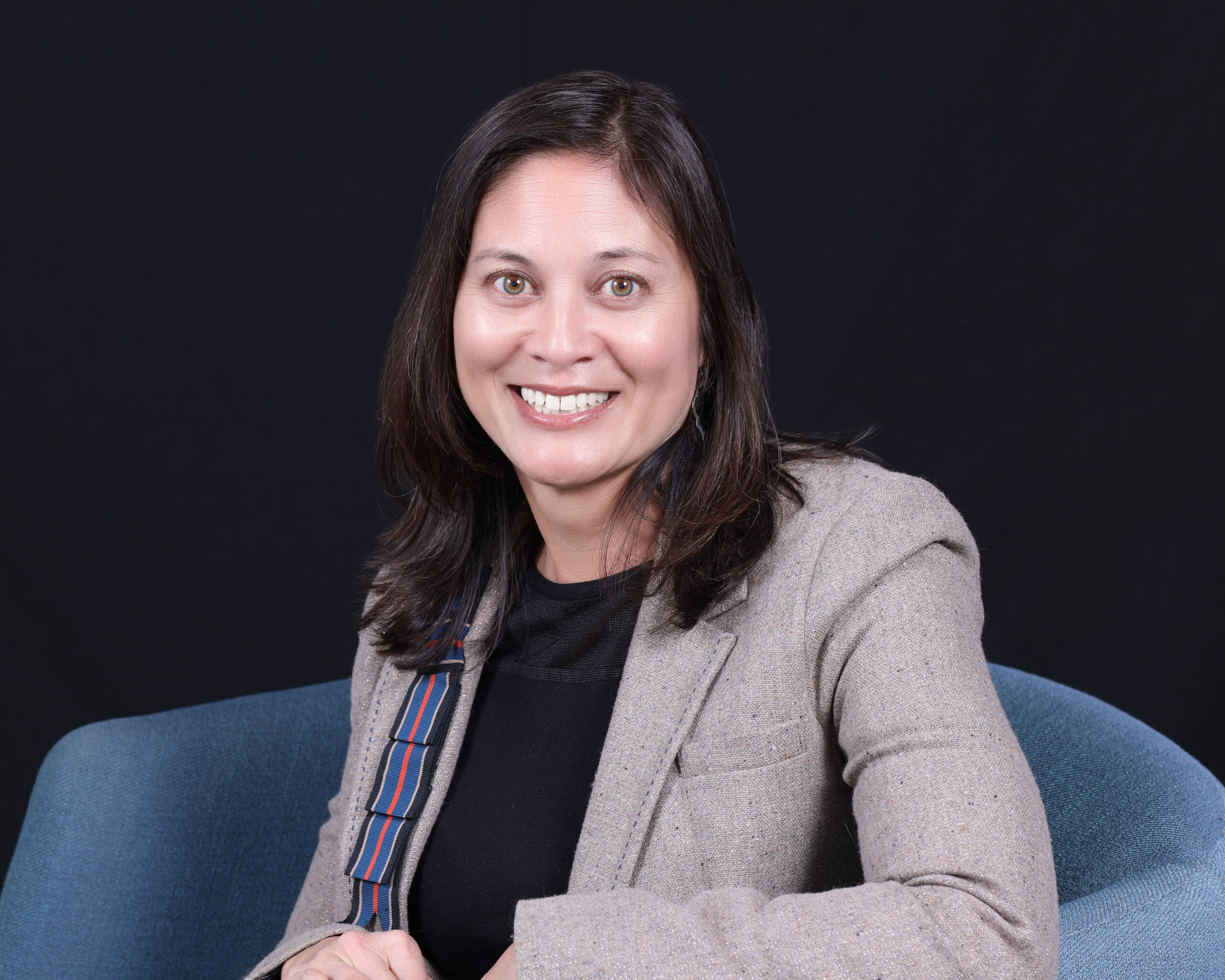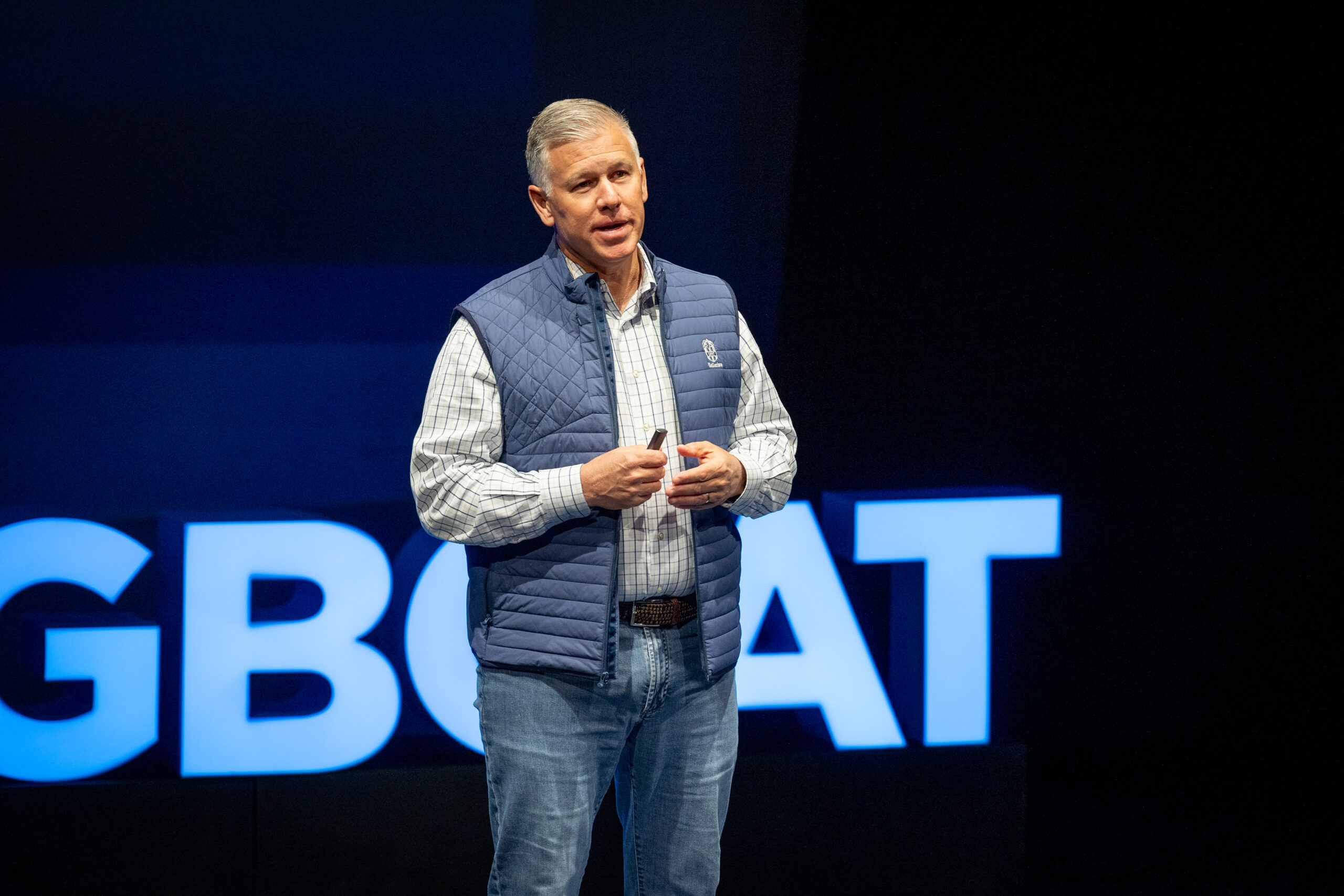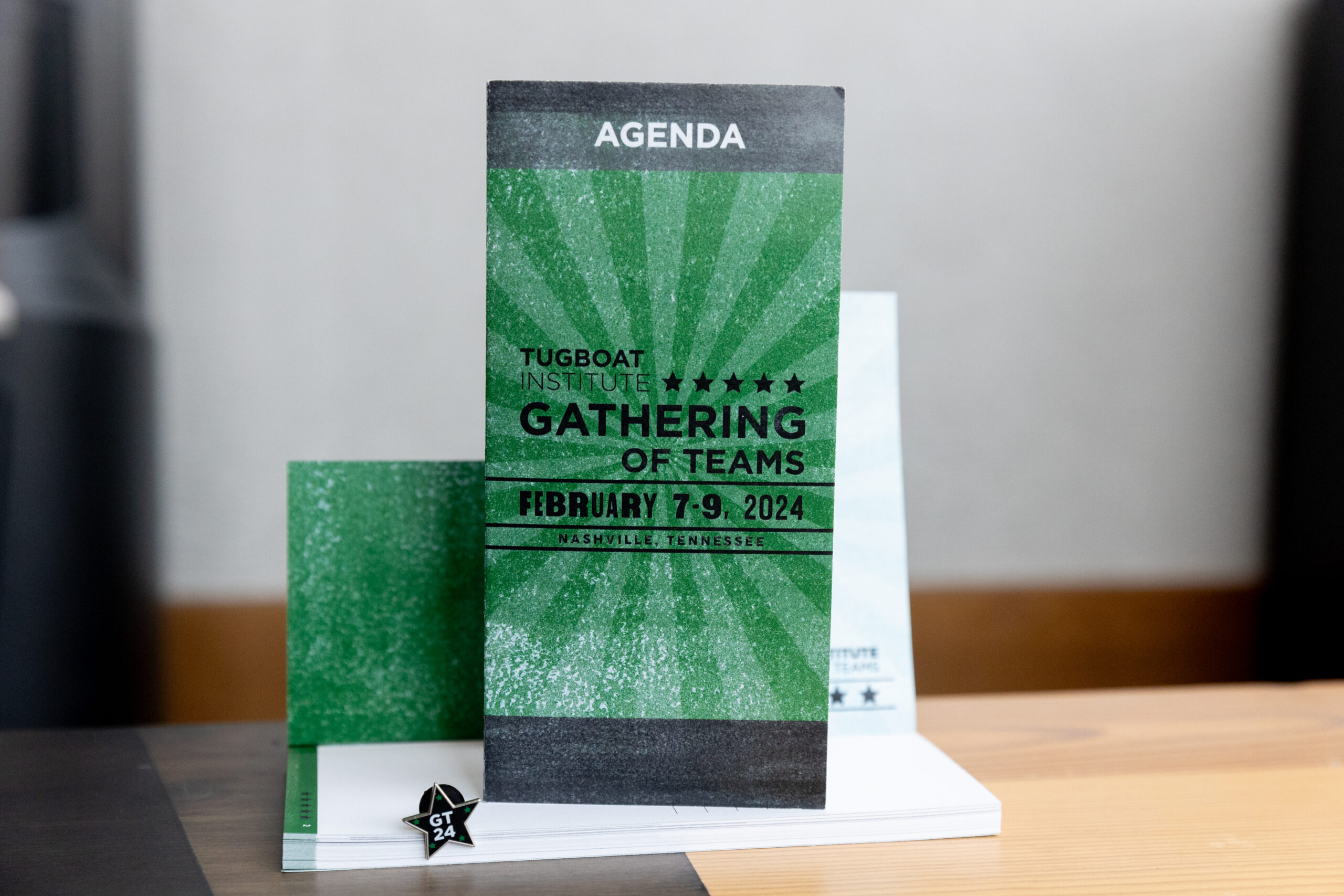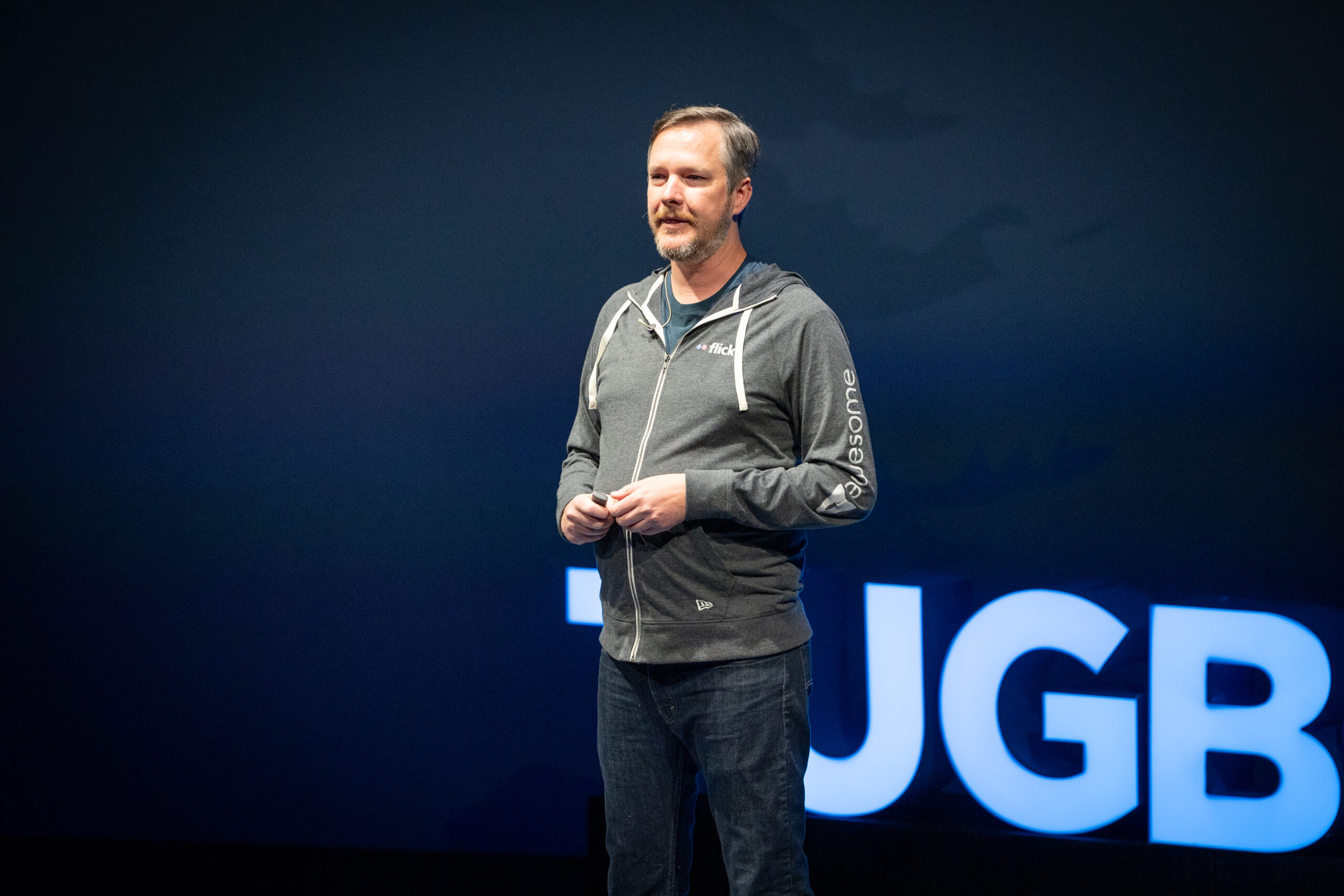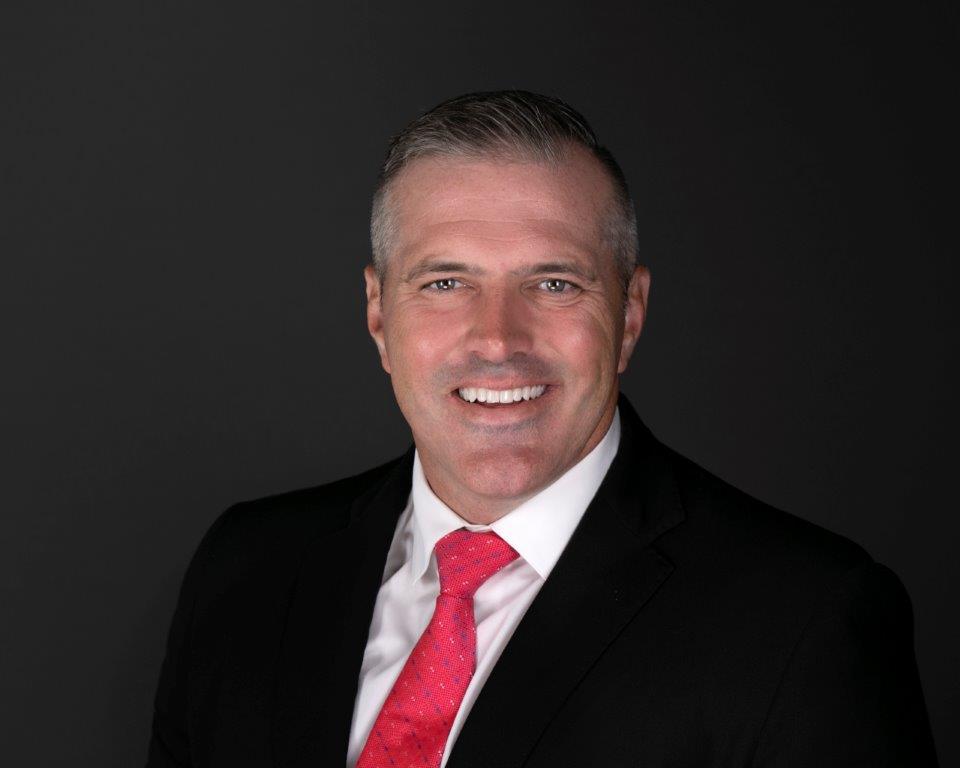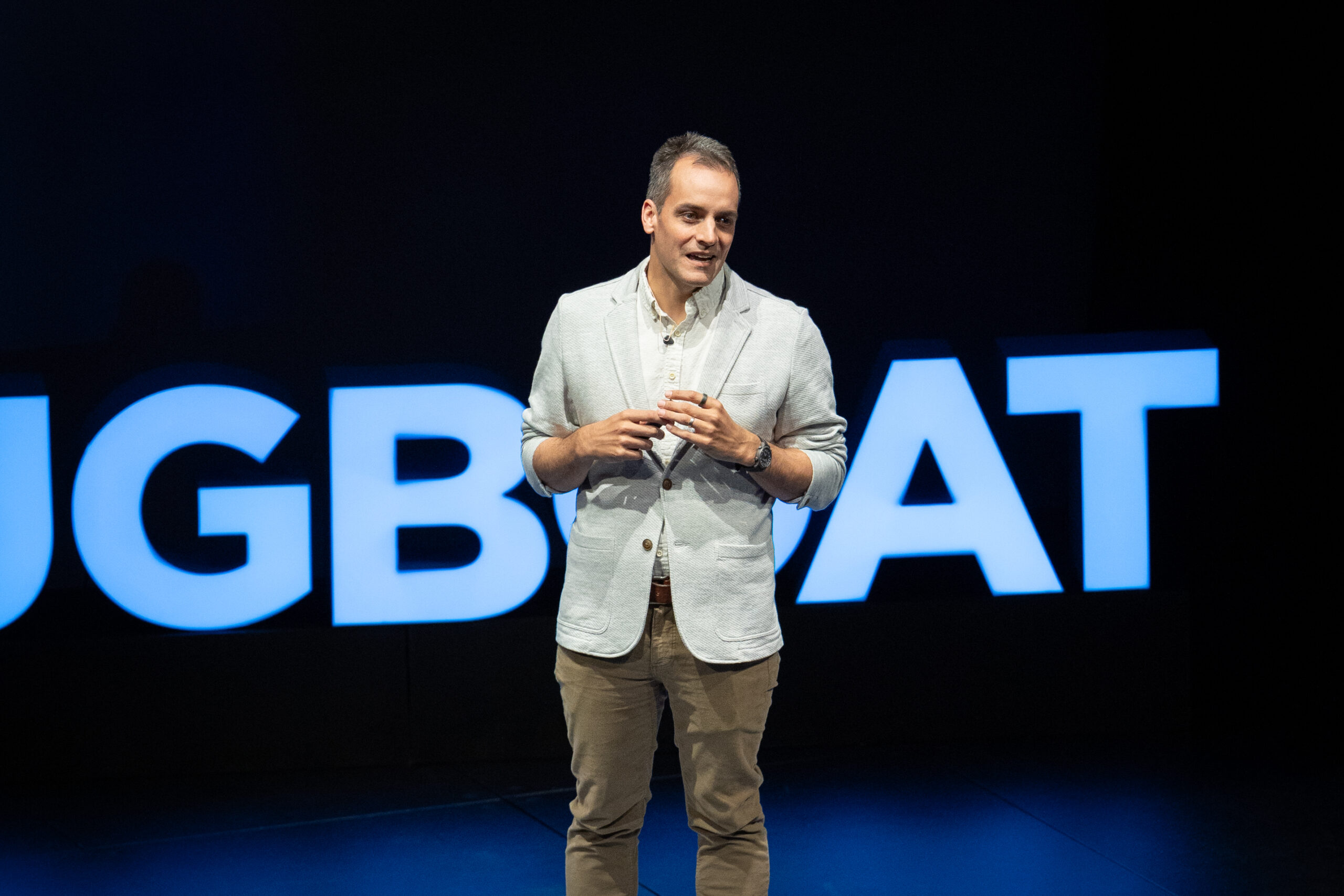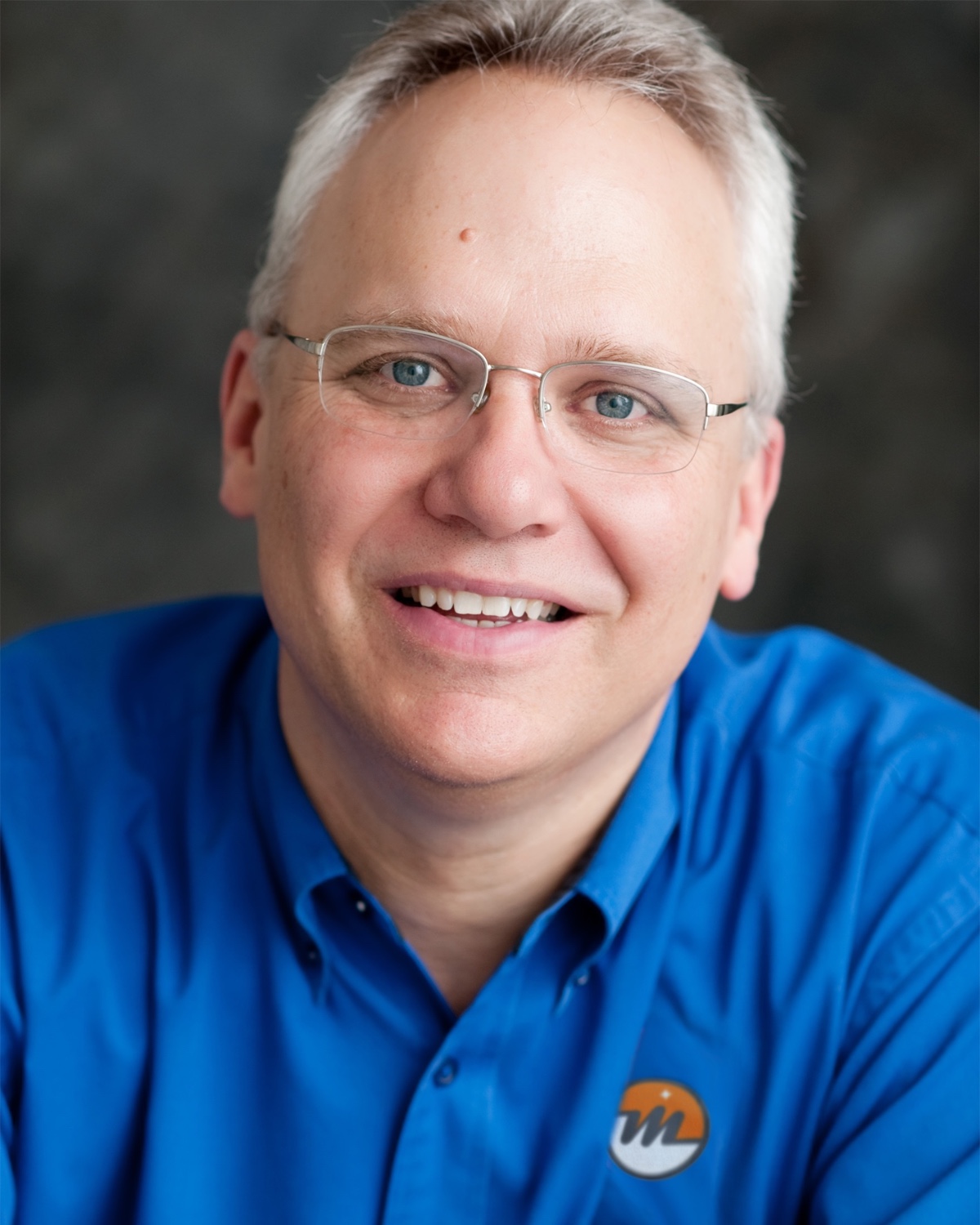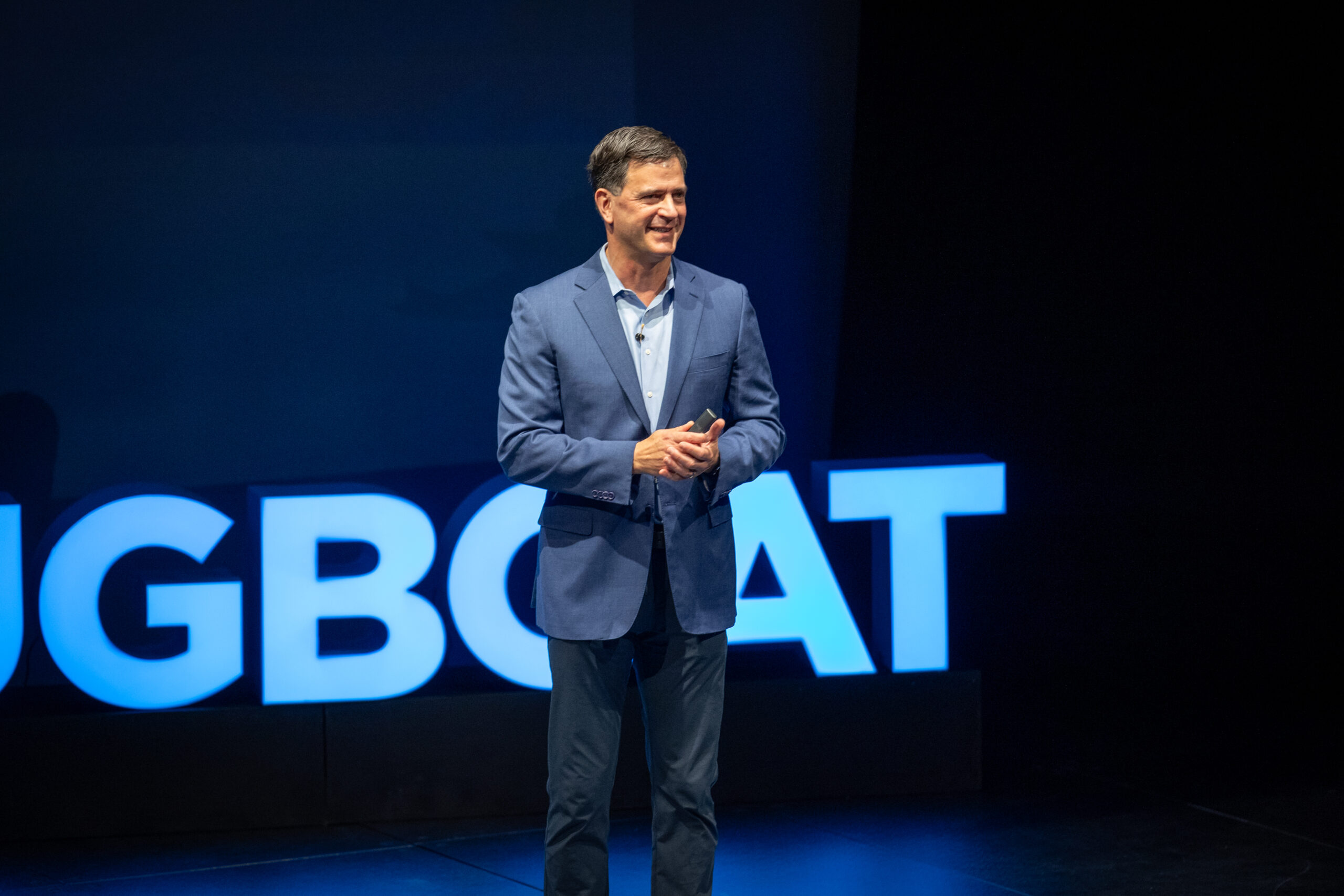A Shared Evergreen® Mindset Can Lead to Fruitful Collaboration and Innovation
At Family Farm & Home, we currently have 71 stores in Michigan, Pennsylvania, Ohio, and Maryland. Our mission is to build a family dedicated to providing exceptional service, products, and prices focused on fulfilling the lifestyle needs of our customers, most of whom are rural and connected to the land. We try to hire team members who live the lifestyle as well, so our whole community is built around people with common experiences, interests, needs, and concerns. We aspire to grow our family to 150 stores, so we need an intense focus on continuous improvement. The combination of this ambition, paired with the shared mindset of our team, our customers, and our vendor partners, has defined our approach to Pragmatic Innovation. In many cases, it’s not even an intentional effort–it just happens naturally.
At the most fundamental level, the fact that our team members and our customers have a common lifestyle means that many great, new ideas come directly from them. When they have a need, or if they perceive a creative way to better fulfill one that already exists, they raise it. Maybe it’s part of the mentality of daily problem-solving that characterizes our lifestyle, but some of the best ideas we’ve had for innovations come from our customers, our team members, and our vendor partners, or a combination of the three, working together. Many are small scale, but when someone has a great idea for a new way to solve an old problem, it’s in their nature to raise it. We don’t actively push people to find these new ideas, but when they do, we support them and help them make it happen. As a result, our culture is one where everyone feels comfortable and encouraged to share any great, new ideas they have.
Sometimes, we have the opportunity to take this collaborative problem-solving to the next level and do something on a much bigger scale. One of the best examples of this is unique, because it is the story of a collaborative innovation with another Tugboat Institute® member, Paul Kalmbach Jr., President of Kalmbach Feeds.
It started in about 2018, when Kalmbach came to us with an idea. One of the products we sell are blocks of compressed protein for animals. We were buying them from someone else at the time, but the product cost was high. Our biggest competitor was selling the same product, so we sold it as a convenience to our customers, but our profit margin was very low. Kalmbach approached us with the idea that they wanted to build a plant to start making these blocks themselves, and they asked us if we would commit to selling their product exclusively.
As we worked through the proposal and the plans, we met with both Paul Sr. and Paul Jr. None of us were members of Tugboat Institute yet, but in retrospect, the fact that we shared the same Evergreen mindset and that we were both family businesses raised our mutual level of comfort working together. We made a handshake kind of a deal, and that was all it took for both sides to move forward. We committed our business to them, they built the plant, and we now exclusively sell their product. Their product is quality and pricing is great, and the program has vastly exceeded both of our expectations, helping both businesses grow significantly.
It's easy with hindsight to see the successes of projects like this without recognizing the risk involved, and therefore the level of trust required. Kalmbach was putting up a multi-million-dollar facility with no signed contract and no history of producing these products. We were committing to honor our word with a supplier that had never made these products before, and with no commitment on exactly what the pricing would be; but we trusted that they would treat us fairly because of the history we had together. These types of collaborations are rarely without risk and they require a deep understanding of the partners involved.
As you can see, an important part of this story is not just that we collaborated with a supplier, but that we collaborated with a fellow Evergreen supplier. Our willingness to rely on each other and to trust that the people we were working with were not just looking to make a profit tomorrow, but instead were focused on the long-term success of the partnership, were key factors in all this. Because of our shared Evergreen mindset, we were willing to make a long-term investment in each other. As a result of this successful partnership, we have collaborated on many additional new products, new ways of merchandising in store, and new packaging designs, and we are excited to find many new ideas to work on together in the future.
At the end of the day, our best innovations come from customers, suppliers, and team members, some of whom are fellow Evergreen companies and some who are not. The fact that we are all working to find solutions that are best for our customer means that we share a purpose with a wide range of people in our space. But the best, longest-term, and most firmly grounded in trust and a shared mindset, have been our collaborations with fellow Evergreen companies. Our tolerance for long-term results means that we are willing to trust each other and commit to initiatives that may or may not bear fruit immediately. In the long run, they do, and have proved better for both of our businesses in every case. The growth that has resulted from our protein block, for example, and from the other collaborations with Kalmbach and others is going to be the fuel that powers us forward toward our goal of 150 stores.
From Squirrels to Burpees: Our Journey to Change at TCI
Change that is intentional and carefully managed over time is essential for the long term survival of a business. Katie Hopkins is the third generation President & CEO of her family’s business, Truck Centers, Inc. (TCI), and she has experienced this reality first hand. After many years of slow and steady growth, TCI entered into a partnership with their primary supplier, Daimler Trucks, and they have seen growth increase a great deal in the last decade. This rapid growth has required an increased focus on change as well.
In this Tugboat Institute® talk, Katie shares how TCI drove change, in their own business and across the Daimler group, by doubling down on their commitment to Change Management. The initial objective was to make the customer experience more standard across all Daimler locations, but the results reached far beyond this goal. In addition to serving as an example to the other dealerships in the group, above all else, Katie and her team have leaned into Change Management and Continuous Improvement as an effective and highly Evergreen® path to Paced Growth.
Watch and be inspired to be more intentional about driving and making change in your organization.
Leveraging H2B Visas for Seasonal and Cultural Success
Labor shortages have been a reality for several years now, but at Ramar Foods, a Filipino-owned company with a strong People First ethos, this problem is not new. Our business is largely seasonal, and the seasonal nature of our work presents challenges not only with hiring, but also with employee retention, cultural alignment, and the inefficiencies of constant recruiting and onboarding. We’ve been searching for a solution for many years that would allow us to staff our teams all while maintaining a workplace culture that is supportive, positive, and people centric.
As we sought solutions to this problem, and especially as wages soared in recent years, we wanted to avoid a few obvious pitfalls. Seasonal employees are at high risk of being un-invested and misaligned because they know they will not be here for the long term. Local hires always have their eyes open for a better opportunity, so often we hire them, train them, and then they ghost us. Effectively integrating new, temporary employees quickly into an Evergreen® company where culture and employee satisfaction are very important is difficult, and we spend an inordinate amount of time and effort recruiting and onboarding in an ever-tighter labor market.
A couple of years ago, we had an idea. Because we are a Filipino food company, we have several international hires already, and as a result, we have some experience securing H1 visas for our full-time foreign workers. The process of sponsoring international employees can be complicated and costly, but our experience with H1 demystified it a bit. We wondered, could we tackle the seasonal hire problem through the same channel?
The equivalent visa for a short-term employee is called the H2B. H2B visas allow companies to hire foreign workers for defined periods of time up to three years. At Ramar, we seek to hire for ten months at a time. Sponsoring an H1 visa is expensive, and the H2B carries costs as well, but it is more reasonable; aside from paying them a reasonable wage, we are required to pay H2B employees’ travel to and from the States and we are responsible for making sure they have a reasonable place to live.
The H2B program is not without risks for the hiring company. The process can be complex and time-consuming. It can also be expensive, especially when it comes time to fulfill the housing requirement of the visa. Whether new hires are foreign or not, recruiting and onboarding requires time and effort, which has costs associated with it. And notably, many of the recruiting agencies that exist to ‘help’ employers find international applicants are, in fact, scams, so you have to be sure to vet the agencies carefully.
At Ramar Foods, we had some unique advantages that helped us offset the risks and costs of the H2B program. Our workforce was already multicultural. In addition to the H1 salaried employees we have hired from overseas, many of our hourly workers are recent immigrants who have maintained ties to their home countries, in particular El Salvador and Mexico. It is a wonderfully international atmosphere! Therefore, we have found that we are able to bypass recruiting agencies and recruit directly through our current workforce. We invited employees with friends and family back home in El Salvador and Mexico to present our seasonal opportunity to them and invite them to apply. We had great success and received applications from many excited and motivated applicants, even the first time around.
Because so many of the people we ended up hiring were coming to join family, we were also able to save on the housing front. Most of them planned, before we even asked them, to stay with family, thereby ensuring that they would be safe, happy, and well-taken care of outside of work. In the case where this was not possible, we stepped in and helped with housing, but this happened relatively infrequently.
When it came to onboarding new employees and helping them adjust to our culture which we value so highly, we had yet another advantage. First of all, our full-time employees, many of whom were either relatives or friends, helped make them feel at home extremely quickly. In addition to the support they provided outside of work, they were eager and willing to engage in the more formal onboarding process at work. On both sides – the new, seasonal employees and the experienced, full-time employees – the level of commitment, energy, and enthusiasm for this work was very high. It became a joyful process that did not simply meet the standard of our People First culture, but rather enhanced it further.
As we moved through the first cohort of H2B employees for the first time, in addition to the advantages we had imagined we would have through the process, we discovered some others as well. First, it turned out that the ten-month employment contract was just perfect for many employees. A traditional H1 employee, and even an H2B employee who has a longer contract, cannot easily travel back and forth between their home country and the US through the duration of their visa. There are strict requirements around how long they must stay in the country or risk invalidating their visa. With an H2B, a worker could come for ten months, earn good money, and then return home to their family for a couple months before, if they so choose, applying again. A second advantage is that many of them are choosing to apply again, which means that when they arrive the second time, they will not be new employees and will not require anywhere near the same level of investment of time and energy to train and onboard.
The enthusiasm on the side of our current employees for this initiative has been overwhelming. A group of warehouse employees decided, on their own initiative, that there was more they could do to support the cohort of seasonal workers, so they created a group they called Amigos for our friends from El Salvador. They took it upon themselves to help new employees navigate not just their new work environment, but life in the US. They created a buddy system, they organized English classes for them, and they helped them, where necessary, find the resources and services they needed to live in a new country. Thanks in great part to the work of the Amigos, we expect that we will likely be able to convert some of these seasonal workers to permanent ones eventually, further reducing stresses on our time, budget, and culture.
It has not been perfect, of course. The first year, we began recruiting a cohort from Mexico, only to learn, when we submitted the applications, that the maximum number of allowable H2B visas had already been granted to Mexican citizens. We turned instead to El Salvador, were able to recruit ten wonderful employees, and we hope to try Mexico again next time. We also have a large facility in Hawaii and would like to bring H2B workers there as well, but we know that the cost of travel will mean that it will be significantly more expensive.
Our Head of People, Maggie Carillo, articulated the simple, central reason this program is such a wonderful fit for Ramar. When she considered the challenging immigration landscape, “coupled with the US labor shortage, I knew that providing people a seasonal job would be mutually beneficial to the worker and to Ramar.” As a company that aims to put people first, this program that was initially intended to solve a strictly business problem has proven to be one of the most important culture enhancements we have implemented in a long time.
Approaching Your Aging Parents About Care
At some point, most of us will face the difficult challenge of talking to our parents about their care as they age. The conversation is almost always challenging because it entails the complete reversal of the dynamic of a life-long relationship, wherein the parent is the caregiver and the child is taken care of. But there are ways to make it easier.
In this Tugboat Institute® talk, Allen Serfas, Co-founder & President of Assistance Home Care, shares his deep personal and professional experience with this difficult conversation. He offers some helpful perspectives and advice for those of us preparing to approach it. It is possible, he believes, to get them the help and support they need, all while preserving and honoring their role as the parent in the relationship.
Watch and be empowered to help your parents get the care they need without conflict or strife.
Celebrating Five Years of Bringing Evergreen® Teams Together
Last week, we hosted our fifth annual Tugboat Institute® Gathering of Teams in Nashville, Tennessee. Many teams were in attendance for the fourth or even fifth time, and for them, it was an opportunity to reconnect with old friends, make new ones, and to continue to learn from the wisdom, best practices and hard-earned mistakes of other Evergreen companies across industries, sizes, geographies, business models and generations. For those teams that joined us for the first time, it was wonderful to observe their earnest engagement and their realization that they are not alone building and leading their companies – in alignment with the Evergreen 7Ps® principles.
Through both structured and unstructured conversations, attendees connected, learned, explored, and celebrated. At the center of the event, we all came together for five TED-style talks. We were treated to wisdom from one Tugboat member and one former member, as well as three distinguished thought leaders.
Robert Pasin is the third generation Chief Wagon Officer of the company his grandfather started and that you have likely known since childhood: Radio Flyer. When Robert stepped into the company at the age of 23, he quickly learned a lesson about the vulnerability of third generation businesses. An established success, whether it be a product or a service, can only carry you so far. The world keeps changing, and if your company does not change with it, decline is inevitable. He set to work reviving Radio Flyer through several Pragmatic Innovation approaches, ones that not only guided them out of the danger zone but, he shared, that have become the backbone of their ongoing product successes.
Our second speaker, Oliver Staehelin, was inspired early in his career to become a student of company culture when challenged by CEO Rich Fairbanks on his first day on the job at Capital One. Graduating from business school, Oliver co-founded a culture assessment company with Stanford Professor Charles O’Reilly. Professor O’Reilly’s research revealed the importance of a strong culture, defined as a company where the behaviors and norms of the company are clearly understood and honored at all levels of the organization. Oliver spoke to the competitive advantages of having a strong culture, especially in the context of very tight labor markets for decades to come.
We were honored that Dr. Robert I. Sutton, Stanford professor and author of many books including the renowned The No Asshole Rule, was able to join us just a week after the release of his newest book, The Friction Project. He shared the findings that he and his co-author, Huggy Rao, present in their new book about friction in the workplace. Human psychology is such that we tend to think of improvement and progress in terms of addition – we constantly look to add something new as we seek to move forward. However, sometimes it is more effective and important to remove something old, whether it be a product, process and/or program, in order to optimize overall performance and work satisfaction.
Our fourth speaker was Kelly D. Parker, a former marketing executive who has become fascinated by the power of storytelling. She now runs her own consulting firm and helps businesses and leaders discover the power of a well-told story to a clearly defined audience. Kelly shared her simple but powerful framework that can make a storyteller of all of us. As leaders of Purpose-driven companies, this is critical in internal and external communications.
Finally, we were thrilled to welcome Peter Zeihan to our stage. Peter is a renowned geopolitical scientist and is the author of many best-selling books including The Accidental Superpower, The Absent Superpower, and, more recently, The End of the World is Just the Beginning: Mapping the Collapse of Globalization. In an astoundingly far-ranging look at the global factors that will shape the coming decades, Peter shared why globalization is ending, and the impacts that will have on all countries and ultimately our businesses and lives. He foresees some uncomfortable realities ahead, but also acknowledges that the United States, Mexico, and Canada will be some of the best positioned regions to adapts to this change. In a provocative and engrossing talk, he gave us an enormous amount to think about, and left us all processing how we may have to adapt to a new world that could be far different from the one we all grew up in.
We are happy to be able to share these talks through our Evergreen Journal® in the coming months, so please keep an eye out for their release.
It’s been half a decade now that we have been bringing together Evergreen leadership teams to meet, learn, grow, and be inspired. Whenever Evergreen leaders gather, something special happens, but this event takes it to the next level. By inviting leadership teams and family members to immerse themselves in the Evergreen 7Ps principles, and to connect with other leaders working in similarly values-driven companies, the understanding of what it means to lead, grow, and adapt one’s Evergreen company seeps deeper into the fabric of each company. It is obviously important that a CEO or president anchor themselves in this thinking and commit to the Evergreen principles if they hope to build a wonderful company that will last for 100 years or more, but it can accelerate when the whole leadership team and company owners share in this vision and key practices. Tugboat Institute Gathering of Teams has become the unique place where that work can happen. To see how this community of teams has progressed in just five years is gratifying. Above all else, it confirms to all of us that we are onto something important. As we gain strength from one another, so grows our certainty that Evergreen companies can and will impact the world in positive ways for many, many decades, if not centuries, to come.
Flickr Foundation: Planning for 100 Years
Ben and Don MacAskill are the founders and CEO & President of Awesome, the company that owns SmugMug and Flickr, among other brands. They specialize in online tools and platforms for photography and have changed the way photographers store, share, and sell their work. A few years ago, when they purchased Flickr from Yahoo, they discovered something unexpected.
In this Tugboat Institute® talk, Ben explains that he and Don were aware, of course, that Flickr owned and stored tens of billions of photos. But they soon also discovered that galleries, museums, and archives all over the world had also uploaded tens of millions of rare, unique, and historic photos. The power and impact of the collection struck them as important and absolutely unique, so they created a plan to ensure that these historic images never got lost to humanity. They created the Flickr Foundation. As they build the structure of this Foundation that is still only about a year old, they are focused on the goal of not just preserving the collection, but preserving it for the long term.
Watch and be inspired by this ambitious and generous initiative.
Enhanced Value to Your Evergreen® Business Through Effective Social Media Posting
In today's digital age, social media is not simply an option for a company; it’s a strategic imperative. As CEO of BSI Corporate Benefits, LLC (BSI), and as someone who discovered it as an adult, I have had to work to evolve my relationship with social media. One of the first tensions I experienced was how to best manage the intersection of my professional and personal online presence. It’s an ongoing journey, but so far, I have learned those two identities are not, in fact, as separate as I might have imagined. Today, I have landed in a place where social media, primarily LinkedIn for now, has become a productive tool that adds value to my business.
My story is not the story of an expert who has completely mastered social media as a business tool. I am connected with approximately 3,500 individuals on LinkedIn, along with a moderate number of followers and typically average 1,000-5,000 views of my posts, with “likes” typically in the 50 to 200 range, so I consider myself an active user, but by no means an influencer. Nevertheless, I have spent time thinking about how and why social media could be an important tool for me and for BSI, and I have landed in a place where it feels like it is effective and worth my time.
I was taught to practice the Three E’s – Educate, Entertain, Enlighten. I played with that for a while, but to be honest, the only content I created that really felt right was content where I could be my genuine self, no matter which “E” I sought to achieve. So I learned my first lesson of social media: the best and truest content I can offer is content in which I can be my authentic self. For others, it might be different, but for me, this is absolute.
Next, I had to understand how my personal online presence might intersect, if at all, with my professional one. As CEO of BSI, I have determined that the answer to this question varies widely from CEO to CEO, depending on yourself, your company, your relationship with your company, and your values. As an Evergreen leader, the business I have built is so deeply rooted in my values that ultimately, there is no discernible difference between who I am as CEO and who I am as a person. This may be different for leaders of different kinds of companies, but I have to imagine that for most Evergreen leaders, this is true. Second, the type of business you are running surely helps determine the degree to which mixing your personal and professional online identities is effective and appropriate. In businesses where information and expertise are the product, the mandate must clearly be to provide information that your followers can’t get elsewhere. Perhaps a business leader’s personal story has less of a place in that type of company’s feed? But BSI is a people business. We manage corporate benefit packages for our clients, and we are only as good as our team and the relationships we create and maintain with our clients. As CEO, I am a team member and the team’s loudest champion. So yes, my personal voice absolutely has a place in the conversation taking place on social media.
Having settled all that, what do I post on my personal feed? I see it as my duty to use my platform to tell BSI's story and promote the principles and pillars that align with our organization's values. This includes championing the importance of placing people at the center of the business and being a force for good in our community. A significant aspect of my LinkedIn activity, therefore, revolves around celebrating individuals, milestones, and community initiatives within BSI. I believe in creating a workplace where employees are not only seen and heard but also recognized and celebrated for their achievements. Making this part of my own personal story boosts morale within the company and communicates to the outside world the degree to which BSI values its people.
Early on, I had some hesitations about celebrating my excellent team so publicly. Wasn’t that just inviting the competition to come and try to steal them away? I have come to realize, however, that in today's digital landscape, talented individuals are sought after by recruiters every day. If our fantastic team members want a new opportunity, they won’t have any trouble finding it. But by acknowledging and promoting their successes, I hope to reinforce a sense of belonging within BSI and communicate how much they are valued, so they don’t want to leave. Sharing how well we regard our team also communicates to the world that BSI is a great place to work and can help attract top talent to the company.
Looking beyond the team, I have come to understand that social media can be a fantastic tool for community building. I understand that while there are various types of users on social media, forming connections, even with those who may not be actively participating, can have a profound impact. My active engagement on LinkedIn has helped me establish meaningful relationships with professionals I would not otherwise have met, especially those within my industry and within Tugboat Institute®’s membership. Growing my network in this way reinforces a sense of community that extends beyond online interactions. When I arrive at a Tugboat experience, for example, and meet some of my peers for the first time in person, I already have a fairly strong sense of who they are and what they value, so we can skip over the formalities and introductions and make the most of the limited time we have together.
Finally, my journey on social media includes the pursuit of thought leadership. I know how much wisdom I encounter on the feeds of people I know and respect, and I aim to give back. My goal is to contribute meaningfully to the broader conversation within our industry and community. I used to suffer from some imposter syndrome when it came to seeing myself as a thought leader, but now I understand that being a thought leader isn’t about immediate perfection as much as a consistent commitment to sharing valuable ideas.
As for my efforts on social media – primarily on LinkedIn – and how much value they have added to BSI, this is also a work in progress. We are not yet experts on SEO and using our data to optimize our impact through this channel. However, our marketing team does track various metrics related to our social media efforts, including follower growth, engagement, and activity compared to competitors. By analyzing these metrics, we can begin to gauge the impact of our social media strategy. We have seen improvements over time! Additionally, our social media presence has led to warmer leads and prospects who are already familiar with BSI's values and culture. This means that initial outreach becomes more of a conversation about shared values and goals rather than a cold sales pitch. This gives us a clear strategic advantage and improves the experience and confidence of potential clients. As a result, we are more likely to win their business, and they feel a sense of pride being associated with a company that has a clear grounding in purpose and stands as a force for good in the community.
As my social media journey continues, I remain dedicated to my goals of celebrating our team, nurturing a positive company culture, and promoting BSI's purpose with Evergreen content. Our success thus far underscores the importance of authenticity, community engagement, and purposeful personal branding in not only enhancing a company's brand, but also by fostering a thriving organizational culture.
The Time Strategist
Dr. Peter Boumgarden is a professor at the WashU Olin Business School. His research focuses on the role of structure- both formally and informally- in shaping the innovation of groups, organizations, and broader network systems. In addition to or perhaps as a byproduct of this work, he has also accumulated a wealth of wisdom about how individuals can be more effective and drive greater impact. Through his research as well as his work consulting and running executive education programs with organizations across sectors, he has developed a research-based set of recommendations for individuals seeking to make better use of their time.
In this Tugboat Institute® talk, Peter begins by sharing that an average lifetime contains just 4000 weeks. If we want to maximize our impact – on our companies, our families, and our communities – we need to be strategic about how we spend our time. But the bottom line is that we are all different, and we need to find a strategy that works for us. Peter gives us tools to better understand our own productivity, and to think about how we can best tackle the challenge of being more strategic with our limited time.
Watch and think more clearly about how you organize your time.
Taking Paired Programming to the Next Level
In the realm of software development, practices that foster collaboration, creativity, and code excellence are worth their weight in gold. One such practice, paired programming, has emerged as a transformative approach. Paired programming refers to a style of software development where two programmers share a single computer and develop together. It is not widespread in the programming industry, but it has started to catch on and become more common. At Menlo Innovations, we have not only embraced it, but elevated it to touch most aspects of our practice, our culture, and our thinking.
The roots of paired programming at Menlo Innovations trace back to my early career as a programmer, right out of college and then graduate school. In my early jobs, I loved the mental challenge of programming, but I found that I kept falling off cliffs in my projects. The teams I was part of kept missing deadlines and delivering poor quality, and the only ones who could fix the inevitable bugs were the programmers who originally wrote the problem code. This led to long nights for many of us. I became concerned that perhaps I wasn’t cut out for this profession. I decided there was something fundamentally wrong with the way the work was organized and I became determined to find a better way. I started reading books on systems thinking and organizational design.
Eventually, I came across a book called Extreme Programming Explained, by Kent Beck. He was a programmer who had faced similar challenges as me, and so he set out on a journey to try to understand why. He realized that in the most crucial moments in his work, which also stood out as some of the best, he often did something unusual – he called over another programmer to watch him work and help him talk through his process, to ensure he was avoiding mistakes. As programmers, we’ve all had those experiences here and there, but it’s not the norm. His idea was, if collaboration like that works well in moments of stress and high pressure, what if we worked that way all the time? The idea of paired programming was born.
At that point, in about 1999 or 2000, I wasn’t sure if this was just a theory or if anyone had started to practice it, but I can tell you that since that day, the teams I have led have practiced it continuously.
Outside of my personal fulfillment issues, what other problems did this solve? For one, it solved the Tower of Knowledge problem. When one person is writing code, no one else knows what they are doing or how they have worked their way through the build. If they are great, they might be a hero programmer, but this is impossible to scale. This often leads to bottlenecks, communication breakdowns, and limited knowledge sharing, as well as tired programmers pushing through a project, even if they are too exhausted to do their best work. This model hinders both individual growth and project outcomes.
Shifting to paired programming helped with all of the above. It has allowed us to scale, to produce more consistently good work, to innovate faster and more creatively, and to enjoy happier, more fulfilled employees.
In 2001, Menlo officially adopted paired programming as a core practice, transforming our landscape. Thanks to Beck’s work, paired programming is not unknown in our industry, but we have taken it to a new level. We pair programmers up every week, and then at the end of the week, we switch the pairs. Each person from the first week’s pairing has to bring their new partner up to speed on the project, or be brought up to speed, and thus the tower of knowledge is shattered. As they create together, they naturally share ideas and write different – and better– code than either one would have written alone. And one of them can go on vacation without causing the whole project to shut down!
Because we are an Evergreen® company, we are equally interested in workplace culture and the employee experience. The impact of our paired work has happily extended far beyond its initial anticipated benefits. Teams working in pairs naturally cultivated mentorship dynamics, with senior developers guiding their junior counterparts. The continuous exchange of ideas sparked innovative solutions that solo work might not have uncovered.
Beyond programming, we have found that paired work is effective at nearly all levels within the company. Our tech people and our quality assurance people all work in pairs. Project managers are a little more loosely coupled, but they do work together. And then in areas like payroll, accounting, and tax preparation, we use pairing strategically, rather than every minute of every day. This extends into leadership; my co-Founder James and I are CEO and COO and we are absolutely paired. We sit next to each other every day, right in the same room as everyone else, and the team expects to see that from us. It’s just who we are at Menlo.
The company's office space itself reflects our ethos. With no cubicles and an open workspace design, developers sit side by side, working on a single screen. This encourages constant interaction, the sharing of insights, and immediate problem-solving.
Pairing has worked so well and become so fundamental to who we are that we have extended the practice into the recruiting and interviewing processes. Prospective employees are paired during interviews, working together on tasks together. We watch them work together and then switch the pairs up every 20 minutes. We instruct them that their job is to ensure that their partner gets a next interview. It’s unusual, and some people don’t like it; this culture is not for everyone. But we find out right away, as this practice provides firsthand experience of Menlo's collaborative environment and ensures that new hires are being taught the company's values from day one.
As technology continues to evolve, and as new methodologies emerge, one lesson remains clear: the greatest solutions often arise when brilliant minds come together, bridging gaps, and creating pathways to success. Menlo's journey with paired programming is a wonderful example of this, reminding us that the future of development is collaborative, innovative, and unlimited in its potential.
How to ENERGIZE Your Life
Dr. Allan Mishra is a leading orthopedic surgeon, an expert in stem-cell research, and a highly respected member of the team at Stanford University Medical Center. He is also the Founder of VyVerse, LLC, through which his program, Vitality Explorers, reaches a growing number of people. Dr. Mishra is deeply interested in human vitality, and in unlocking the keys to living a more vital and energized life.
In this Tugboat Institute® talk, Dr. Mishra shares his expertise on vitality and helps us understand how and why we should seek to move from exhaustion to energy. Our modern world provides many reasons to feel depleted and tired, but by posing a few simple, pointed questions and sharing research on a few fundamental keys to an energetic boost, Dr. Mishra gives us some tools to improve our energy and, thereby, our lives.
Watch and take steps to become more vital and energize your life.
